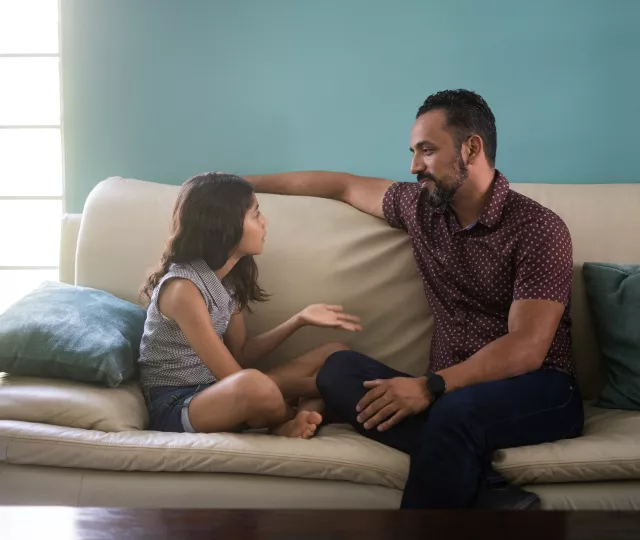This toolkit is designed to encourage families, caregivers, and educators to have open, accurate and constructive conversations about race, racial differences, racial inequity and racism, with their children/students, in an age-appropriate way. The main objectives are to:
- Provide users with resources to encourage and facilitate discussions about race/racism
- Increase children’s exposure to racially (and ethnically) diverse stories and characters
- Promote positive and accurate learning experiences about human differences and similarities
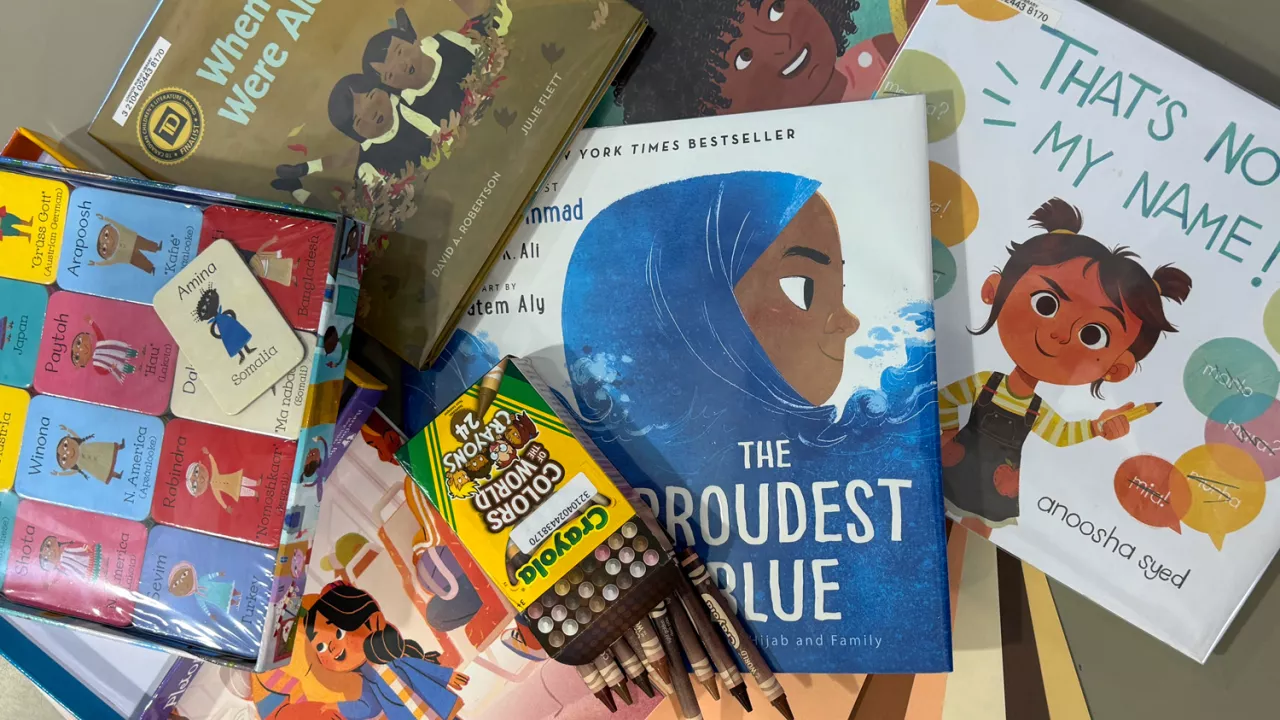
What's in this Kit?
Books and Activities
Our curated booklist for children 6-8 features Canadian authors from a variety of diverse backgrounds. Books are also available as stand-alone reads through the catalogue.
Toys, Games and Activities (Manipulatives)
Find games and activities to begin the conversation and expose your child to diversity.
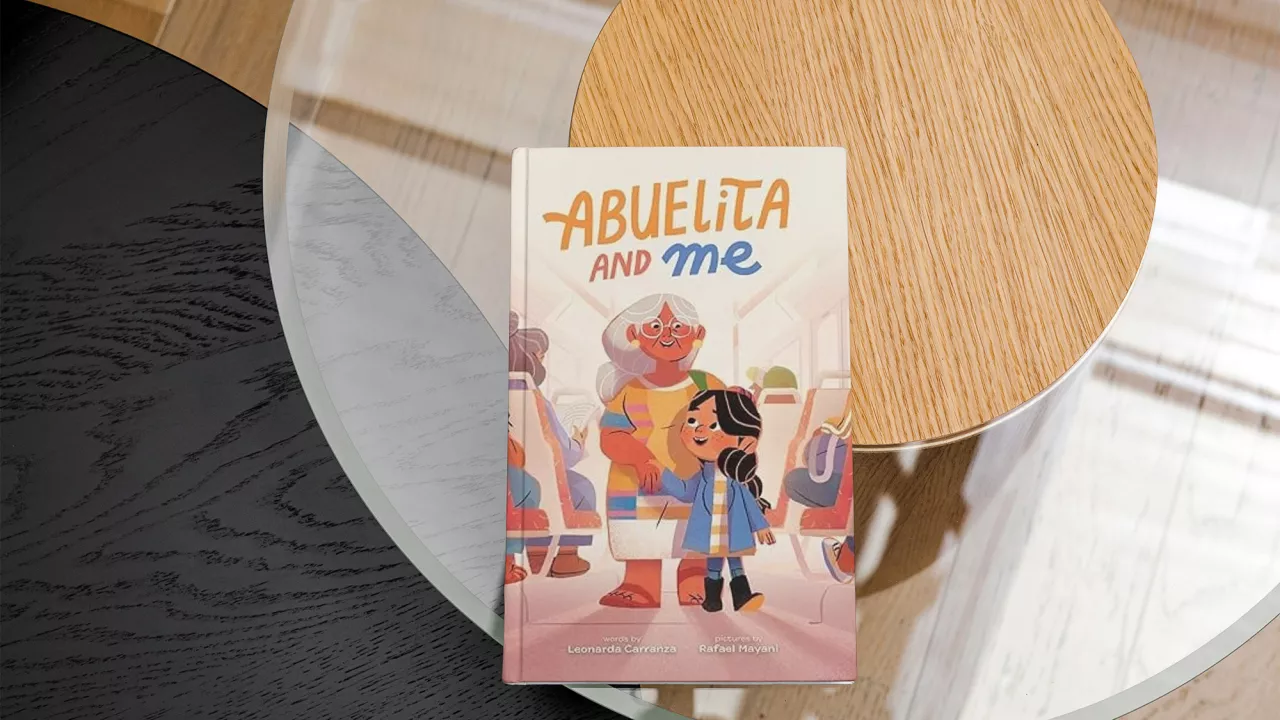
Abuelita And Me
by Leonarda Carranza
Abuelita and Me is an intergenerational story of a young girl and her abuelita, who enjoy spending time together. One day, while they are running errands, the little girl is confused and hurt by their encounters with others. Told through the little girl’s eyes, readers are reminded of the racism and microaggressions that people of colour experience on a daily basis. Touching and poignant, this book will inspire empathy and compassion in its readers as they navigate society.
Borrow Abuelita And Me
-
- Who knows what "Abuelita" means? Do you have special names for your grandparents?
- Abuelita and the young girl go shopping to find ingredients for sopa (a traditional Mexican soup), what special meals do you and your family make?
- Why do you think Abuelita and the little girl are treated the way they were while running errands? How should they have been treated?
- The shopkeeper swats Abuelita away like she's a mosquito. What do you think about that? How do you think Abuelita feels about this? Describe how you think being ignored makes someone feel?
- The bus driver accuses Abuelita of stealing and yells at them. The little girl says, "I feel so small, like we are shrinking." If you were the bus driver, how would you have treated Abuelita and the girl? How do you think the other people on the bus should have reacted? What can someone do if they see something like that happen?
- Why do you think the little girl wanted to stay inside after the errand? How do you get through difficult experiences?
- What can you do to try and understand someone who speaks differently from you?
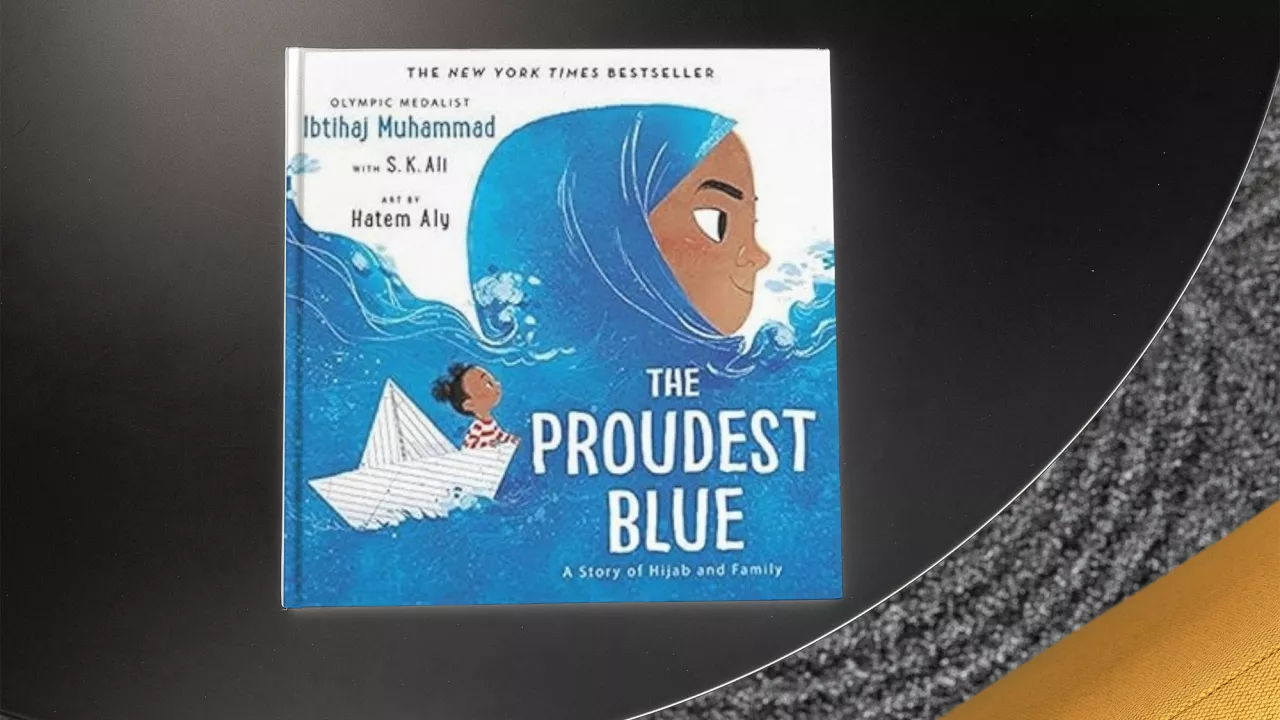
The Proudest Blue
by Ibtihaj Muhammad
In The Proudest Blue, readers are introduced to a young Muslim girl named Faizah and her sister, Asiya, as they begin their first day of school. This is also Asiya’s first day of wearing a hijab, which is a head scarf worn as part of the Muslim faith. Not everyone is tolerant of Asiya’s hijab, and Faizah witnesses the discrimination and bullying that her sister encounters. Ultimately, this book is a sensitive exploration of the challenges that hijabi wearing girls and women face, while remaining uplifting and celebratory of one’s identity, the bond between siblings and new experiences.
Borrow The Proudest Blue
-
- How are you the same as other people you see? How are you different from them?
- What are some things you wear something new?
- Why do you think some children didn't understand why Asiya was wearing a hijab?
- What are some things you can say or do to support a friend who is being teased?
- Many people wear special headwear or clothing representing their faith. Is it important to respect cultural or faith traditions? Why/why not?
- Who makes you feel comfortable about being yourself? What happens when you do not feel accepted and included by others? Can you think of something you did today to help someone feel included? How do you think they felt when they were included and joined in?
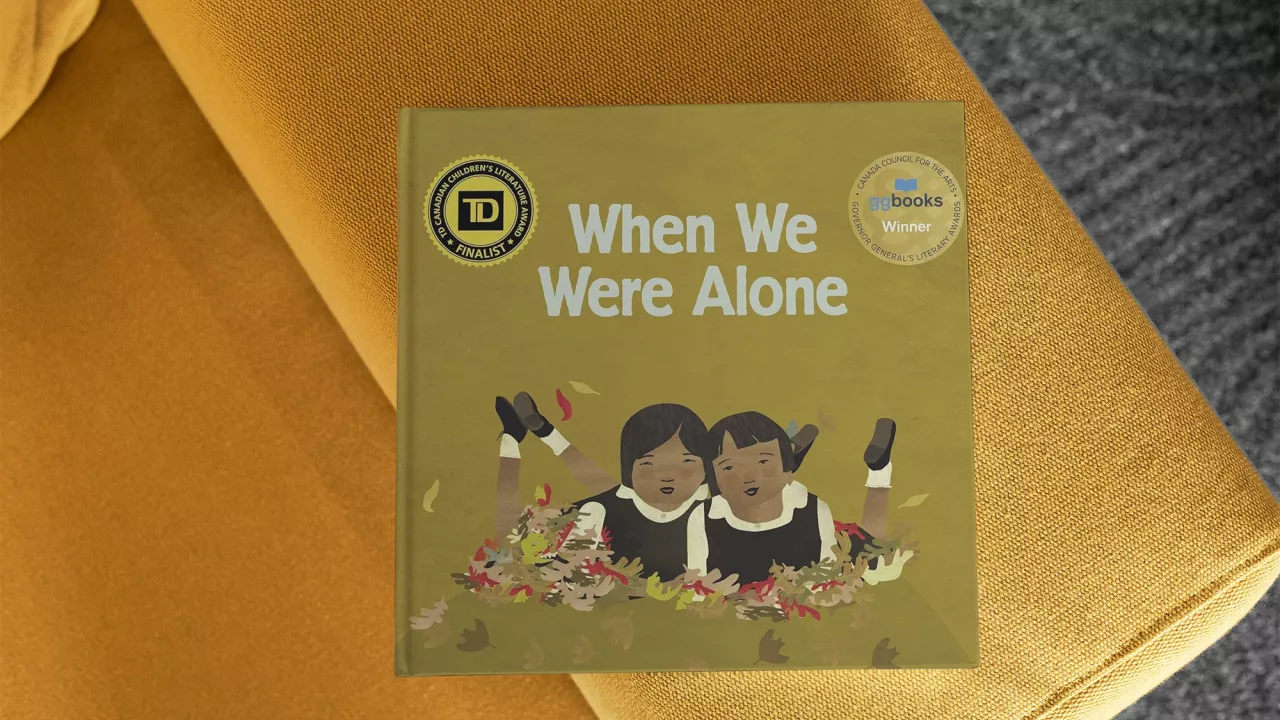
When We Were Alone
by David A. Robertson
In this Cree heritage story, a curious girl learns about the ways in which her grandmother held on to her cultural identity when she was a child at a residential school. Robertson presents the dark history and lasting legacy of residential schools in an age-appropriate way by focusing on the grandmother’s strength and the ways in which she, and her classmates, persevered in the face of oppression. This book is ultimately a story of empowerment and resilience, and provides a great opportunity for conversations between adults and children on a difficult topic.
Learn how to pronounce Cree words here.
Borrow When We Were Alone
-
- Have you ever heard of residential schools before? If so, what do you know about them?
- Nókom means grandmother in Cree. Do you have special names for your grandparents?
- If you were forced to leave your family right now to go away to somewhere unknown and different, how would you feel? What would you miss most about your home life? How do you think your parents would feel about you being taken away from them?
- Why do you think the teachers wanted the children to look the same?
- What are some of the emotions you felt (or think you would feel) about being in a new place or school? What was the hardest part of being new?
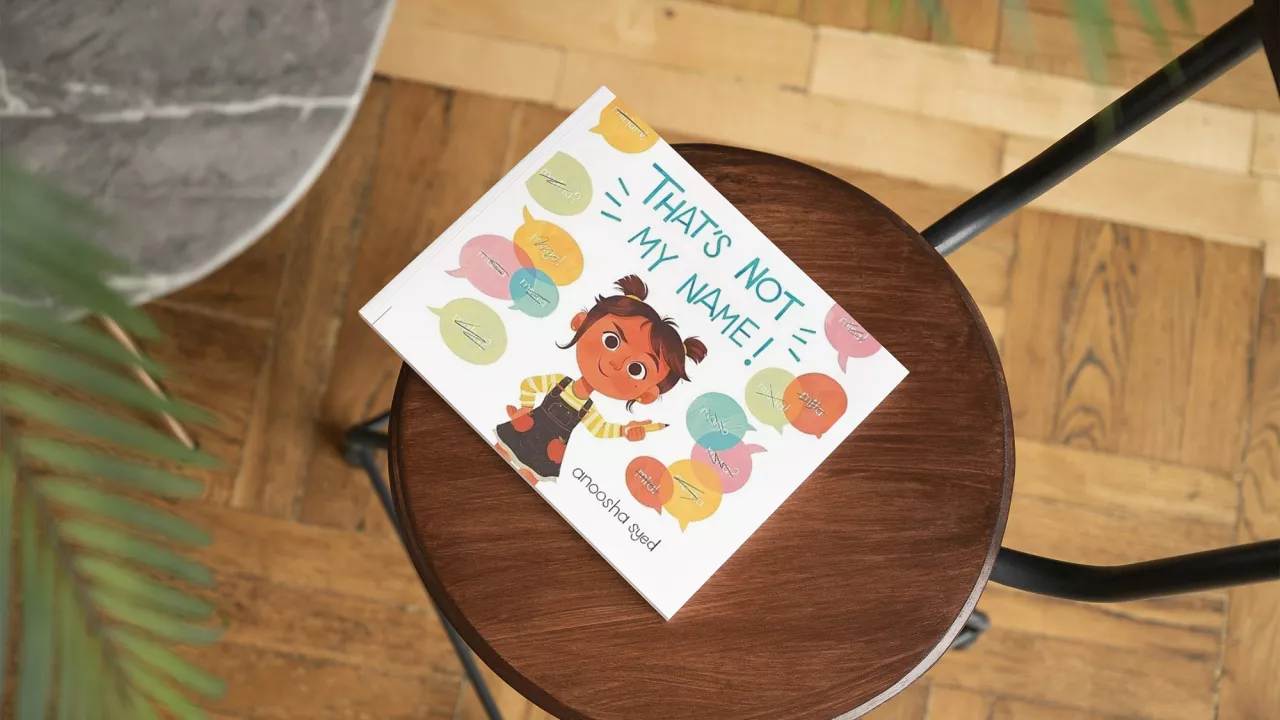
That's Not My Name!
by Anoosha Syed
That's Not My Name highlights the inequality in which names are treated based on what cultures they come from. Mirha (pronounced MIR-ha) is excited to begin her first day of school, but her day does not go as planned when her classmates and teachers struggle to say her name correctly. Eventually, with the help of her family, Mirha finds the confidence to talk to her classmates and be proud of her name. This story is a celebration of names and how they are deeply connected to our sense of identity.
Borrow That's Not My Name!
-
- What is special about someone's name?
- Does your name have a special meaning? Do you know if your name was chosen for a special reason?
- Can you describe how you feel when you are the 'new person' anywhere? E.g. What were sme of the emotions you felt on your first day of school? What were you excited for? Were you nervous or scared about anything?
- Mirha feels upset because her classmates couldn't say her name right. Do you think being upset is ok?
- Have you ever been made to feel different because of your name or anything else about you?
- How does this story make you feel about learning names that you think are different? What would you do to make sure that you said someone's name correctly?

Beautiful You, Beautiful Me
by Tasha Spillet-Sumner
Beautiful You, Beautiful Me is a wonderful story of discovery. A young girl, Izzy, learns that her biracial family is to be celebrated for each person’s unique characteristics and that “belonging comes in all shapes and sizes.” Izzy notices that her mom’s features are not the same as her own. However, Izzy’s mom helps her realize that even though they may look different, they are both beautiful and, most importantly, these differences are what make them unique.
Borrow Beautiful You, Beautiful Me
-
- What are your favourite things about yourself?
- What similarities do you notice in the members of your family? Do you have the same smiles? Do you have the same laugh?
- What differences do you notice in your immediate family? What about in your extended family (cousins, aunts, grandparents, uncles, etc.)?
- What words would you use to describe your skin?
Beyond the Books
Suggested Actions for Parents and Caregivers
The following suggestions can help you continue to have conversations about race with your child, that support awareness, celebrate racial differences and practice anti-racism.
1. Learn the facts: By learning about the issues, you’ll be better able to discuss them. Listen to podcasts, watch videos, read up on the history of racism and civil rights etc., so that you’ll be better prepared to answer your child’s questions. *If you are now beginning to have these conversations, check out our Preschool and Elementary Primary resource Toolkits for ideas.
2. Discuss the science: At this age, your child should have a basic understanding of where skin colour comes from. If they don't, research together. This will help your child learn that all skin have a common purpose, no skin colour is better or more important than the other.
3. Model it: Talking to your child about the importance of embracing difference and treating others with respect, though essential, is not enough. Your actions, both subtle and overt, are what they will emulate. Confront your own biases and model how you want your children to respond to others who may be different from them.
4. Look for books, movies, plays, etc., to share with your family. Diverse content will help your child see the differences and similarities between people.
5. Recognize and celebrate differences daily (i.e. resist colour-blindness): If your child asks about someone's skin colour, use this as an opportunity to acknowledge that people do indeed look different, but point out things we all have in common.
6. Teach Anti-Racism: Discuss ways to be anti-racists. Talk about how to be an ally, rather than a bystander, when it comes to viewing racism. Teach your child about key anti-racists from the Civil Rights movement. Talk about how change happens when many people work together to fight against injustices.
7. Keep the conversations going: Plan for a marathon, not a sprint. Talking about race and racism should not be a one-time occurrence. Encourage your child to come to you with questions and continue to talk about these issues.

